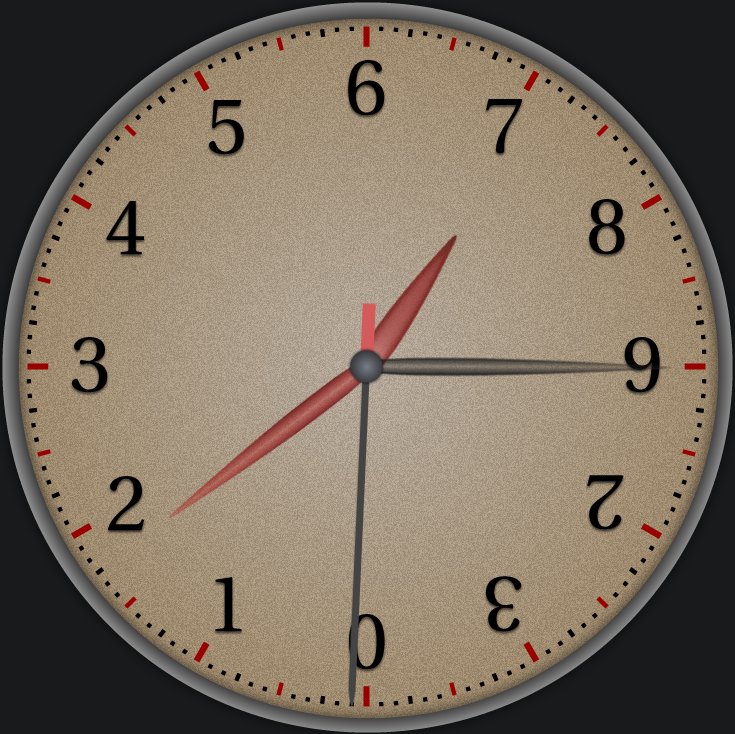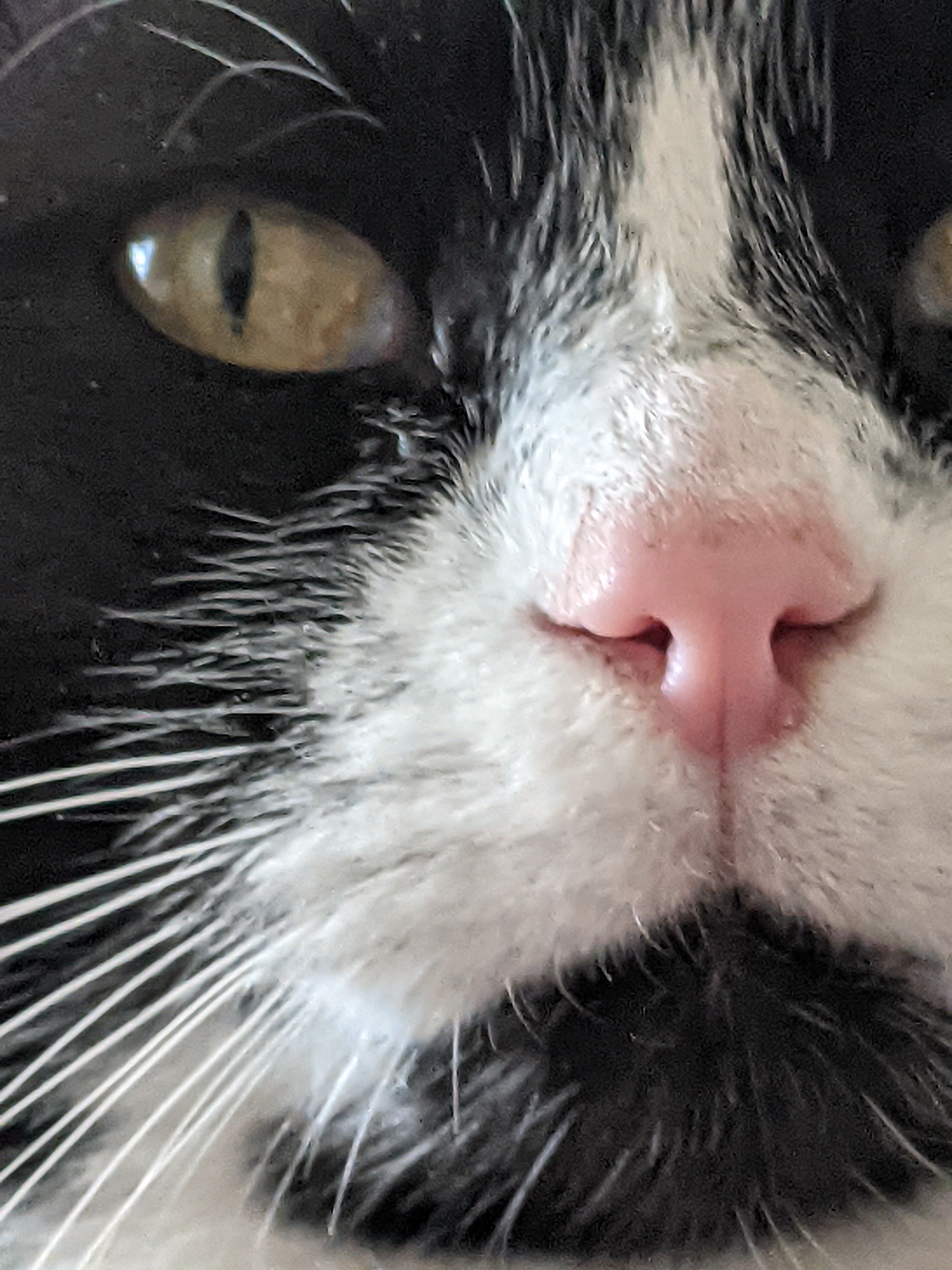Yesterday I was thinking about how clocks could perhaps be improved upon by making them follow solely dozenal system… and lo and behold, a quick internet search led me to an implementation of just that!
It looks familiar at first, but you notice the difference very quickly. No 10, 11, or 12 on it for one (to be expected in dozenal), and there appears to be more hands than usual! Seems complicated, but it’s actually even simpler than the one we’re used to:
- The shortest hand follows the sun and circles the clock once a day (24h), pointing down at midnight and up at noon.
- Longer red hand is 12 times faster, meaning it circles the clock in the exact time it takes the shortest to move from 0 to 1 (2h).
- Every hand moves 12 times faster than the shorter one! So the next one circles the clock in 10 minutes and the fastest in 50 seconds.
- You could of course keep adding hands by again increasing the speed by 12, but those would move so fast we’d have little use for them. (next one would circle the clock in about 4s)
Unfortunately I have no clue what to call these time units, but I love them! The longest/fastest of these hands circles the clock 1728 times a day, which is 1000z in dozenal! This clock makes converting from one time unit to another a breeze, just move the dozenal point! (same advantage as SI-system generally has in decimal) No need to multiply with 60 or 24.
I’ll leave the beauty of digital presentation of time in this system for you to figure out. Check out the site linked above and just play around with it for a bit!
This is really interesting! It reminds me of the time I was looking into (apologies if this is a little off-topic) the decimal clock, which broke the day into tenths. It was almost adopted in France a few hundred years ago, if I remember correctly.
The advantage I can see in using the dozenal clock, however, is in expressing the time in dozenals (as in, as an analogue to decimals).
For example, when using the standard notation; 20 mins would convert to 0.333… hours. However in dozenal, it would seem to convert to 0.4(I think?) Which is nicer to deal with than repeating numbers.
Not off-topic at all, we’re comparing clocks after all. :) French revolution is always interesting to read about! More than just a political revolution, but revolution of ideas and measurements and whatnot also.
I definitely prefer dozenal clock over the decimal one, for the very reason you mentioned. Same with other measurements, being able to divide them by 3 neatly is very useful. Or would be. It’s somewhat interesting that we have a word for a fourth of an hour (in Finnish too), but not for a third of an hour.
Although, I do have to admit decimal clock would have its advantages as long as we’re still using decimal. 10min being 0.1h or 0.01 days would be quite nice for conversions. Should we one day switch to dozenal, we’d get best of both worlds! One can dream…
I would love to see a change to either decimal or dozenal time! Though the time format we use now is just so well-established and for many, intuitive. Additionally, every country - or at least a vast majority - would need to adopt the change in time, or that would present even more issues (GPS, times zone travel, international meetings /zoom calls, etc.). Not impossible, but still a challenge.
A feature of dozenal that I, too, appreciate is, as you say yourself, being divisible into both thirds and fourths of an hour neatly.
Ah, maybe one day!


